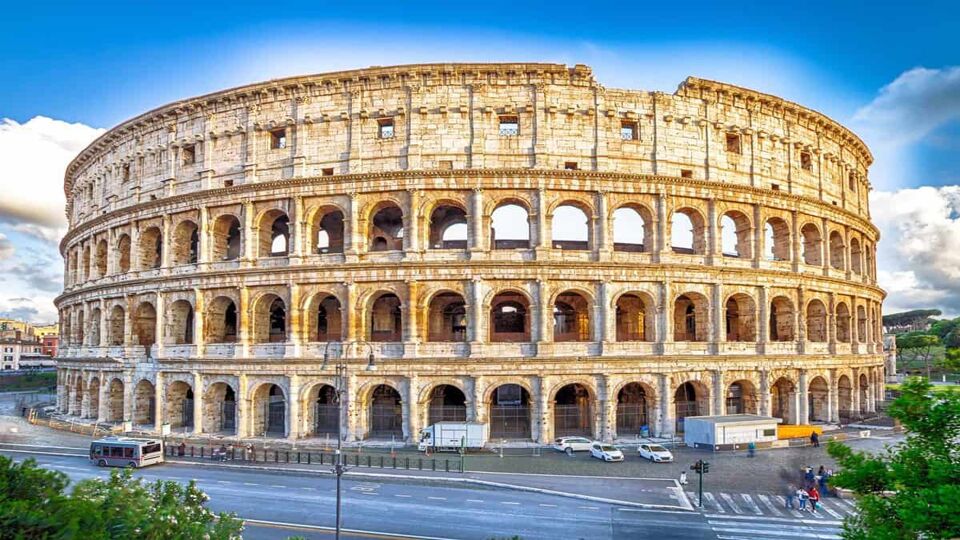Rome
Price €180
Min age 3
Rating 4.97 / 5 [3686 ratings]
Tour supplied by:
Bucket list destination:
Rome, Lazio, Italy

Rome has been on history’s front page for more than 2,000 years; it’s a city of marvels that has seen glory, greatness and triumph – and excess, murder and decadence – in equal measure. Yet despite its dazzling wealth of ancient, medieval, Renaissance and Baroque art and architecture, the Eternal City is no museum piece.
A thriving and modern metropolis among venerable treasures, Rome boasts a hip, 21st-century art scene, world-class theatre, outstanding shopping, superb cuisine and, of course, gelato. One of Europe’s most exciting capitals, Rome is a shining example of la dolce vita; its many piazzas alive with al fresco bars and restaurants.
Founded on seven hills, Rome is largely defined by its tightly packed historic centre. Most of the city’s landmarks can be found here, such as the Pantheon, Piazza Navona and the Colosseum. Across the Tiber lies the Vatican, the world’s smallest independent state and home to the world’s most famous ceiling fresco. Beyond the ancient walls, Rome is also very close to the sea, and a trip to the beach makes the perfect urban escape.
Our selection of the best Viator tours of this destination, plus helpful tickets and transfers
Rome
Price €180
Min age 3
Rating 4.97 / 5 [3686 ratings]
Tour supplied by:
Rome
Price €62
Min age 0
Rating 4.61 / 5 [2331 ratings]
Tour supplied by:
Rome
Price €142
Min age 0
Rating 4.96 / 5 [1883 ratings]
Tour supplied by:
Rome
Price €68
Min age 0
Rating 4.27 / 5 [1827 ratings]
Tour supplied by:
Rome
Price €75
Min age 16
Rating 4.89 / 5 [1512 ratings]
Tour supplied by:
High summer can be unbearably hot and humid in Rome so it’s best to visit in spring or autumn, though the Easter holiday period, when pilgrims and school groups descend on the city, tends to be very busy.
Winter is a charming time to visit, especially around Christmas, and January and February can be mild.
June and July are good months for culture vultures – the squares are filled with open-air restaurants and bars, and parks such as Villa Celimontana and Villa Ada play host to concerts and festivals.
Rome has two main airports. The main international airport, Fiumicino (FCO), also known as Leonardo da Vinci Airport, is 30km from the city centre and serves major international airlines. Busy Ciampino (CIO), 17km to the southeast, serves mostly budget carriers from European destinations. There are plentiful taxis at both flat-rate fares of approx EUR50 from Fiumicino and EUR30 from Ciampino. From Fiumicino, you can take a fast, direct train to Roma Termini. The journey takes about a half-an-hour and costs around EUR20, departing every 20 minutes.
Walking around the compact historic centre is the best way to admire its many sights – and discover its hidden secrets. You can’t hail taxis on the street – they must be booked or hailed at taxi ranks. Licensed taxis are white or yellow, with ‘SPQR’ on the doors; don’t get in an unauthorised taxi. Also watch for drivers switching to the more expensive tariff 2 – tariff 1 is standard within the GRA ring road. See here for up-to-date rates.
Renting a car isn’t recommended as the traffic is usually awful and parking is almost impossible. Cycling is a popular option and especially good for getting around the historic centre: there are bike-sharing racks on most of the piazzas. Download Uber’s Lime app and go!
The ‘Archaeologia Card’ allows access to nine major archaeological sites in Rome, with discounts on audio guides and guided tours. It may be purchased at the Colosseum, Baths of Caracalla and the four museums that comprise the National Museum of Rome (Palazzo Massimo, Palazzo Altemps, Baths of Diocletian and Balbi Crypt).
The three-day Roma Pass offers free entrance to the first two museums visited and discounts on the others, as well as free public transport.
Rome’s historic centre is split into key urban quarters or rioni. Most of the grand luxury hotels are around Piazza di Spagna (the Spanish Steps) and Via Veneto, while intimate boutique hotels and B&Bs tend to be in Trastevere and near Campo de Fiori. Other neighbourhoods such as Testaccio – a mecca for foodies – and Monti, Rome’s oldest neighbourhood are filled with cool shops, funky bars, and fashionable restaurants.
For an edgier cosmopolitan mix, head further west towards Esquilino, near Termini train station and Il Pigneto, home to loft-dwelling artists and students.
Founded on seven hills, Rome is largely defined by its tightly packed historic centre. Most of the city’s landmarks can be found here, such as the Pantheon, Piazza Navona and the Colosseum. Across the Tiber lies the Vatican, the world’s smallest independent state and home to the world’s most famous ceiling fresco. Beyond the ancient walls, Rome is also very close to the sea, and a trip to the beach makes the perfect urban escape.